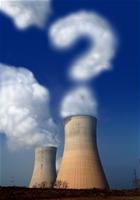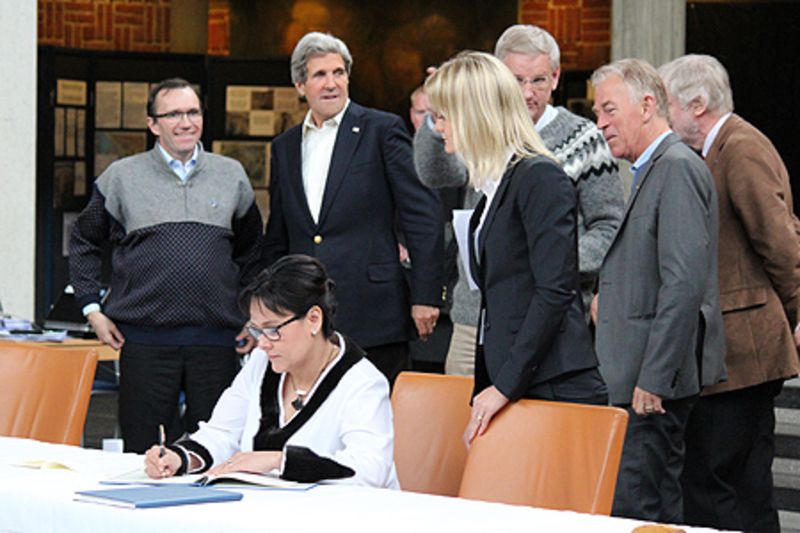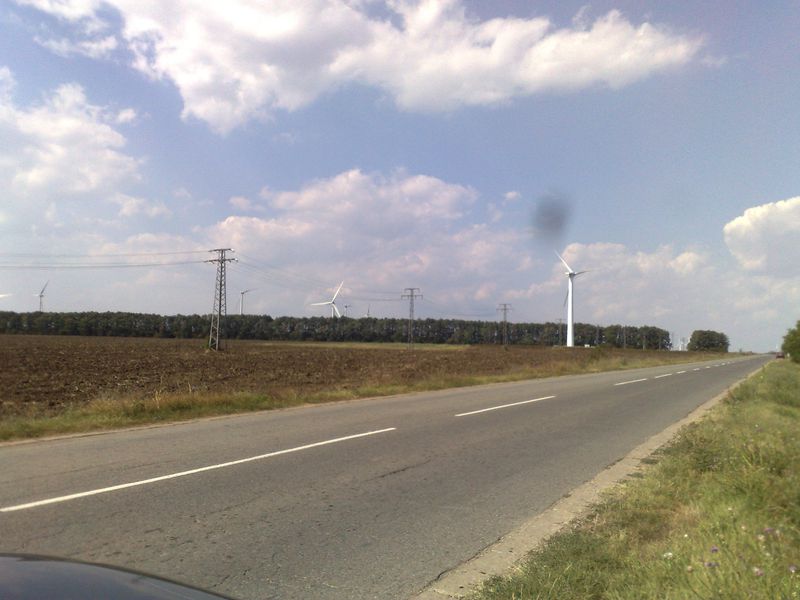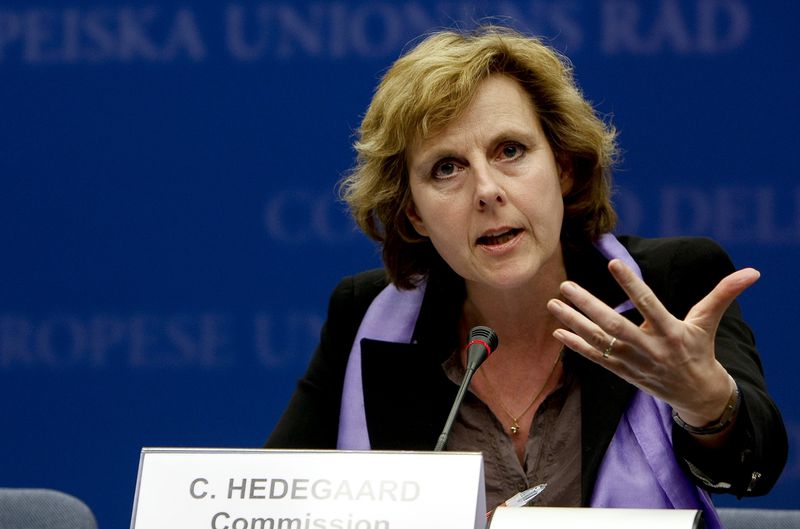Let the СО2 trading start now!
Ralitsa Kovacheva, May 7, 2010
 With a significant delay, the European Commission finally approved Bulgaria's National Carbon Allowances Allocation Plan for the period 2008-2012. The document has been approved by the government in the end of 2009. Are the Bulgarian companies ready to take part in the trade of carbon emissions - euinside asked Evgheni Ivanov, executive director of the Confederation of the Employers and Industrialists in Bulgaria (CEIBG):
With a significant delay, the European Commission finally approved Bulgaria's National Carbon Allowances Allocation Plan for the period 2008-2012. The document has been approved by the government in the end of 2009. Are the Bulgarian companies ready to take part in the trade of carbon emissions - euinside asked Evgheni Ivanov, executive director of the Confederation of the Employers and Industrialists in Bulgaria (CEIBG):
euinside: What does the news about the Plan’s approval by the European Commission mean to Bulgarian companies and the possibility for them to take part in the European Emissions Trading Scheme (EETS) in the 2008-2012 period?
EVGHENI IVANOV: In all cases the approval of the National Allocation Plan (NAP) for 2008-2012 г. is a good and long awaited news, which Bulgarian companies were hoping to hear for two and a half years. And although it is hard to satisfy all wishes and expectations the approval of NAP means that, although later, Bulgarian companies will succeed in joining the international emissions trading scheme and to have an opportunity to plan their future strategies. The adoption of the plan means that in this area too we are already in Europe, unlike before, when Bulgaria was outside the building and the EC refused letting us at least in the backyard.
CEIBG has always defended the basic position that this plan has to express state's policy toward reducing carbon emissions and their equivalents on the one hand, and to stimulate companies to search for and invest in modern and clean technologies, on the other. Last but not least, the NAP's approval means also creation of a relatively clear trading environment with this new for the country and for the companies instrument as carbon emissions allowances is.
euinside: Are companies prepared to join the European Emissions Trading Scheme?
EVGHENI IVANOV: Most of the 132 companies included in the Plan and especially the bigger ones - Solvay Sodi, Enel Maritsa Iztok - 3, the cement plants, are part of international companies, whose owners operate on the international allowances market through their companies in other EU or non EU countries. There is no way this experience not to be applied in Bulgaria too. The European rules for allowances operation settle not only trading issues, but the transfer of allowances between installations with a joint owner in one or in several countries. So the companies could plan which plant, when and what quantity to produce in order to manage their costs and investments.
Representatives of another part of the companies took part in the discussions and the preparation of the plan, so it could be assumed they are also ready to join EETS. It is clear that like any new procedure, it is to be seen how it is working and whether it needs some correction or additional organization.
euinside: A lot or not enough is the amount of 42 million tonnes (42,433,833) of CO2 quotas annually, allocated in the Plan?
EVGHENI IVANOV: It is quite a delicate question, having in mind that the purpose of the Kyoto protocol and subsequent EU regulation is to reduce emissions globally, in the EU and in every country separately. Besides, the European Commission monitors extremely closely the allocation of allowances by states and by plants to ensure as precise as possible what is really emitted to avoid unfair competition in emissions trading. The Commission is not willing to tolerate excesses which is why before the Plan has been approved Bulgarian companies' allowances have been cut from 69 to 42 million tones.
It is hard to say whether this amount of allowances is more or less, because it depends on many factors, which are hard to be foreseen. For instance, the global economic crisis has affected many sectors - the cement industry, the production of fertilizers or metals, where production has stopped or is significantly reduced. And less work inevitably leads to less emissions than planned. The same effect happens also when production has stopped for modernization and for the installation of new technologies.
Then companies release less greenhouse gasses than planned and can decide how  to use the surplus - either sell it or save it for a next stage when they will produce and release more pollution gasses. If the National Allocation Plan had been approved in time - in the end of 2007 - perhaps many companies would have had a surplus of allowances. But because of the significant delay Bulgaria will join emissions trading two years later than other countries which are on the market since 2008. That’s why the allocation of pollution credits between installations has been based upon actually reported emissions for the 132 plants included in the plan.
to use the surplus - either sell it or save it for a next stage when they will produce and release more pollution gasses. If the National Allocation Plan had been approved in time - in the end of 2007 - perhaps many companies would have had a surplus of allowances. But because of the significant delay Bulgaria will join emissions trading two years later than other countries which are on the market since 2008. That’s why the allocation of pollution credits between installations has been based upon actually reported emissions for the 132 plants included in the plan.
In order not to harm operators by the delay and not to force them buy significant amounts of allowances, it has been agreed the allocation of pollution credits for 2008 to be taken on the basis of verified emissions either in 2007 or in 2008, depending on which year was best. The reports for the emissions have to be prepared by March 30th of every year for the previous one by licensed independent international companies and then they have to be sent to the Executive Agency “Environment” (EAE). For 2009 plants received pollution credits that have taken into account the basis year for every installation, the planned production data, modernization and new capacity installation, reduced by a relevant coefficient for each year. And all this given the fact that some plants have around 6 million tonnes of free allowances and can join to European emissions trading scheme yet in 2010.
euinside: Which companies can benefit the most by emissions trading and which can lose? And what are the reasons for possible losses?
EVGHENI IVANOV: Given that the Bulgarian plan for 2008-2012 was adopted with big delay, it could be said that all plants included in it sustain losses by the delay. Because between the initial plan from 2007, which was returned for revision twice by the European Commission, and the last one, adopted in April 2010, Bulgaria's request for 69 million tonnes was reduced by 20% for 2007 and by another 37% for the entire period 2008-2012, which makes it totally 42 million tones annually. Because of the delay there has been an additional reduction of allowances for the so called “new participants” reserved otherwise for the plants that are yet to come into operation by the end of 2012, but the main problem with this reserve was associated with the Kremikovtsi steel factory.
Kremikovtsi's quota proved to be an extraordinary complicated issue, on which the Bulgarian government, represented by the minister of the environment Nona Karadzhova and her team, negotiated till the very last moment with the European Commission and the solution of the problem has been directly bound to the adoption of the Plan. The problem was that according to the initial projects prepared in 2007 and 2008, Kremikovtsi was still operating and needed a great amount of allowances. On that basis the allocation of allowances in the plan by plants and by years was bigger.
By the time the NAP has been approved Kremikovtsi has stopped work and the European Commission raise the issue of reducing the total amount of allowances. Ultimately there was an agreement the “new participants” reserve to be reduced with a special allowance for the steel plant, in case it or part of it would start working by 2012. If not, the allowances scheduled for the plant would be canceled and lost. This way the “new participants” reserve, preliminary estimated for 23 million allowances was reduced by 9.5 million. This means that when this reserve is depleted each plant that would start work by the end of 2012 must buy allowances on the free market in order to continue to work.Under the EU directive on greenhouse gas emissions the sanctions for excessive emissions or for a lack of permission is 100 euros per tonne.
euinside: How is the trade of carbon allowances being performed in Bulgaria, on European and on global level?
EVGHENI IVANOV: It is known that for the period 2008-2012, Bulgaria will participate only in international emissions trading. Domestic plants will not buy and sell greenhouse gas emissions quotas among themselves. Before proceeding to the actual trading companies must submit their reports for verified emissions to the EAE by March 31st. By April 30th the account of each operator in the National Register should be supplied with appropriate quantity of allowances. Depending on whether they are more or less than foreseen in the allocation plan for the year, the company can decide whether to trade the surplus or to keep it for a time when it would plan to produce or buy more in case of a shortage for the year. Free quotas, which plants are trading, are known as the EUA - European Union Allowances.
euinside: In what way energy saving, energy efficiency and reducing of pollution is being stimulated by the Plan?
EVGHENI IVANOV: Having a plan in the first place makes it clear how much allowances each installation has. Most participants are interested in emitting less than the allocated amount of carbon dioxide or other pollutants equivalent to it, and to trade with the remaining quantities. Separately, many companies have realised the so-called joint implementation projects, which are also regulated by the Kyoto Protocol. Essentially this is a type of a modern investment, financed by developed countries that generally have a shortage of emissions and this is one of the mechanisms to obtain missing allowances.
In Bulgaria 21 joint implementation projects have been realized so far. One of the first, for instance, is from 2004, in “Biovet” Peshtera, where with the cooperation of the Netherlands a co-generation plant has been built. More than 30 million levs (15.3 mn euro) have been invested then. After putting it into operation a 77% reduction of carbon emissions has been reported for the period 1988-2005. Except the Netherlands, Bulgarian companies have performed such projects in cooperation with Denmark, Switzerland, Japan and other countries. The purpose of these projects is using foreign investment to reduce emissions in Bulgaria and the amount that is saved to be transferred to the investor's state to supplement its shortage of free allowances, without buying them from the free market and without penalties for the surpluses of greenhouse gases.
Unfortunately, in this respect a gap appeared between the government and business. Many honest operators who have relatively early committed and have invested in new clean industries did not receive the necessary quantity of allowances in the latest version of the plan because of its delay and because of the decision allocations to be based on verified emissions. And we have a paradox - those who have relatively early invested millions of levs or euro in new technologies will be punished for having saved emissions, instead of being encouraged. And other industries, such as some heating companies which do not even comply with environmental standards and requirements get more allowances, because they have polluted more.
euinside: There have been scandals in the EU regarding cases of abuses with allowances. How does the national plan deal with this and does it leave loopholes for such "detours"?
EVGHENI IVANOV: To my knowledge, these abuses were related to allowances trading at the carbon exchanges and VAT drain via fake transactions, performed by unscrupulous actors. This is not relevant to national allocation plans, but rather to conscientious or non-conscientious participation in the international market of individual entities or individuals. The advice to the operators of installations is to deal only with licensed, inspected and experienced firms because yet there are indications of increased courtship of the businesses by carbon market traders.
euinside: How is the surplus of allowances, which Bulgaria wants to sell to the carbon market, formed?
EVGHENI IVANOV: This is a completely different story - the Green Investment Scheme, which is also regulated by the Kyoto Protocol and which should not be confused with a mechanism, allowing companies included in the NAP 2008-2012 to participate in the EETS. It's not just carbon dioxide but also equivalent kinds of greenhouse gases, as methane for example, released by the production of rice, cultivation of domestic animals, storage and processing of waste, as well as some other types of gases which are formed by other sectors and are inevitably being released by each country.
They also affect climate and global warming and in fact this is the so-called states' quota. As a subject of sales these quotas are also known as Assigned Amount Units (AAU). In Bulgaria such a mechanism is available for the first time now, with the recent amendments to the Law on Environmental Protection, currently in parliament, although there was a similar attempt 5-6 years ago, but it was not realized. As with the companies, the state too can get a surplus, as is the case in Bulgaria, which can be sold to another country.
 Bulgaria's free resource currently is around 40-50 million tonnes per year or about 200 million tonnes for the five years between 2008 and 2012. And whether and how the state will be able to sell it is a completely different story. What is specific with this mechanism is that the money received from the sale of AAU can be used for investment in projects related to reducing carbon emissions only, renewable energy projects, energy efficiency, rehabilitation of buildings etc.
Bulgaria's free resource currently is around 40-50 million tonnes per year or about 200 million tonnes for the five years between 2008 and 2012. And whether and how the state will be able to sell it is a completely different story. What is specific with this mechanism is that the money received from the sale of AAU can be used for investment in projects related to reducing carbon emissions only, renewable energy projects, energy efficiency, rehabilitation of buildings etc.
euinside: This was one of anti-crisis measures in the government’s anti crisis plan. Is it realistic and when it could be realized?
EVGHENI IVANOV: Given the above – how to spend the money, we can hardly accept this as part of the anti-crisis measures. This money cannot be used for budget expenditures and cannot be included in the state budget. According to the amendments to the Law on Environmental Protection, that CEIBG fully supports, the money from the sale of AAU will be collected in non-budgetary accounts of the Ministry of Finance and could only be used for projects related to greenhouse gas emissions saving.
Moreover - in the proposed changes to the Law on Environmental Protection the money is to be administered by the National Trust Eco Fund. A representative of a buyer of AAU is also allowed to take part in the Fund, although without a voting right. He can however monitor and suggest how to spend the money. In this connection I want to say that there are currently many attempts by various structures and individuals to abuse this mechanism or to use it with not quite pure intentions.
This would mean to go back to where we've started and where we were two years ago when the European Commission refused to approve Bulgaria's plan. But it also means something else, which should not in any case be allowed - Bulgaria again to be rejected preventing the country from selling anything from this resource. Therefore it is important the funds received from the sales of AAU to be collected in the National Trust Eco Fund and be supervised by two or three ministers - of the environmental, the finance and the economy, energy and tourism.
 | © Government of Sweden
| © Government of Sweden | © euinside
| © euinside | © Council of the European Union
| © Council of the European Union